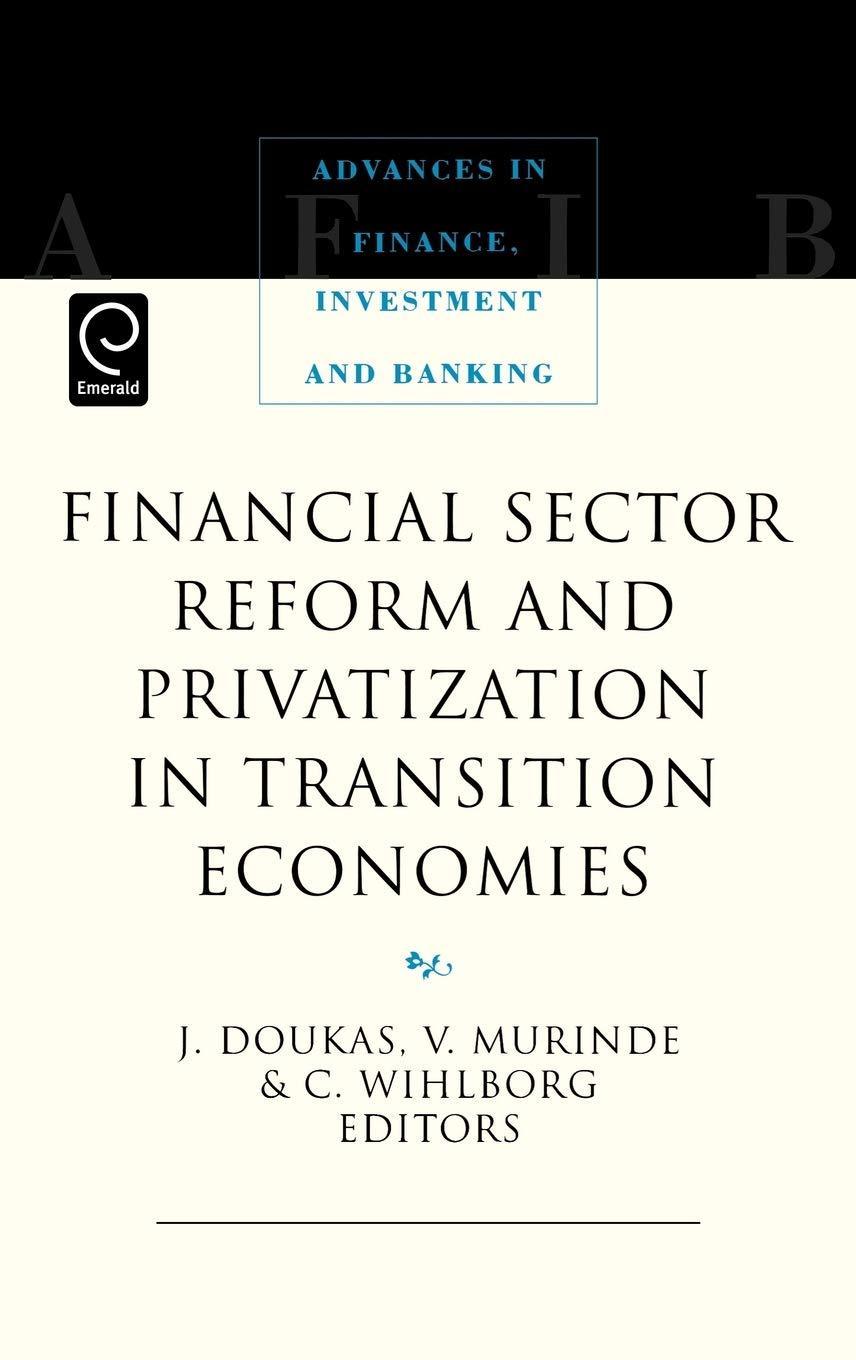Answered step by step
Verified Expert Solution
Question
1 Approved Answer
Question 3 1 8 Marks Stock X has a 1 0 % expected return, a beta coefficient of 0 . 9 , and a 3
Question Marks
Stock X has a expected return, a beta coefficient of and a standard deviation of expected
returns. Stock Y has a expected return, a beta coefficient of and a standard deviation.
The riskfree rate is and the market risk premium is
Required:
Calculate each stocks coefficient of variation.
Which stock is riskier for a diversified investor?
Calculate each stocks required rate of return.
On the basis of the two stocks expected and required returns, which stock would be more
attractive to a diversified investor?
Calculate the required return of a portfolio with R invested in Stock X and R invested
in Stock Y
If the market risk premium increased to which of the two stocks would have the larger
increase in its required return?
Question Marks
Apilado Appliance Corporation is considering a merger with the Vaccaro Vacuum Company. Vaccaro is
a publicly traded company, and its current beta is Vaccaro has been barely profitable, so it has
paid an average of only in taxes during the last several years. In addition, it uses little debt, having
a debt ratio of just
If the acquisition were made, Apilado would operate Vaccaro as a separate, wholly owned subsidiary.
Apilado would pay taxes on a consolidated basis, and the tax rate would therefore increase to
Apilado also would increase the debt capitalization in the Vaccaro subsidiary to of assets, which
would increase its beta to Apilados acquisition department estimates that Vaccaro, if acquired,
would produce the following cash flows to Apilados shareholders in millions of rands:
Year Cash Flows
R
R
R
R
and beyond Constant growth at
These cash flows include all acquisition effects. Apilados cost of equity is its beta is and its
cost of debt is The riskfree rate is
Required:
What discount rate should be used to discount the estimated cash flows? Hint: Use Apilados rs
to determine the market risk premium.
MBA
MAYJUNE SPECIAL EXAMINATION
What is the rand value of Vaccaro to Apilado?
Vaccaro has million common shares outstanding. What is the maximum price per share that
Apilado should offer for Vaccaro? If the tender offer is accepted at this price, what will happen to
Apilados stock price?
Question Marks
Stream A R R R R R R
Stream B R R R R R R
Required:
Find the present values of the following cash flow streams at an discount rate.
What are the PVs of the streams at a discount rate?
Question Marks
Consider a project that requires an initial outlay of R and results in a single cash inflow of R
after five years.
Required:
If the cost of capital is what are the project's NPV and PI Is the project acceptable under
each of these techniques?
What is the project's NPV and PI if the cost of capital is Is the project acceptable under
that condition?
What is the project's payback period? Does payback make much sense for this project? Why?
Question Marks
The Wall Company has ordinary shares outstanding that are currently selling at R It has
bonds outstanding that will not mature for years. They were issued at a par value of R
paying a coupon rate of Comparable bonds now yield Walls R par value preferred stock
was issued at and is now yielding ; shares are outstanding.
Required:
Develop Walls market value based capital structure.
Step by Step Solution
There are 3 Steps involved in it
Step: 1

Get Instant Access to Expert-Tailored Solutions
See step-by-step solutions with expert insights and AI powered tools for academic success
Step: 2

Step: 3

Ace Your Homework with AI
Get the answers you need in no time with our AI-driven, step-by-step assistance
Get Started


